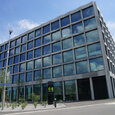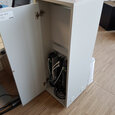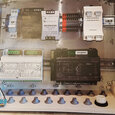An energy supplier with a future
Creating innovative, sustainable solutions for mobility, supply and building technology - these are Eniwa AG's main concerns. The regional energy supplier offers long-term security of supply to around 30 communities and employs over 300 staff and 50 trainees. In 2017 Eniwa, then IBAarau, invested in a new location which was occupied at the beginning of 2018. True to the company's philosophy, planning focused on sustainability and efficiency. An architecturally modern, extremely open office building was achieved, which was then to be technically equipped with the appropriate finesse. In view of digitalisation, which also poses new challenges for the energy industry, the new network was of particular importance.
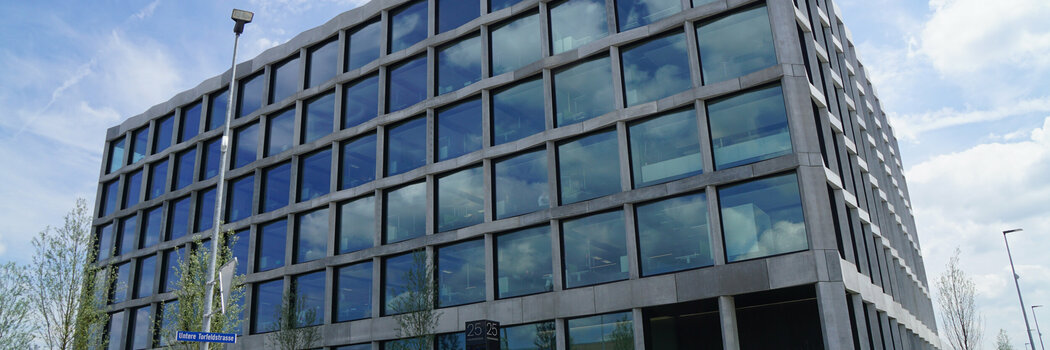
Creative, sustainable, practical - Eniwa implements design network
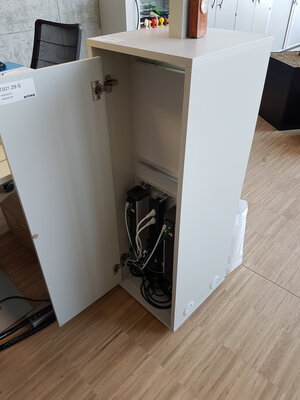
Sustainable infrastructure planning
The building cabling at the previous company location was realised classically in copper using floor distribution units. Up to 100 employees per floor shared the existing 10G connections, which was a frequent cause of bottlenecks. The complete copper cabling also had to be completely renewed twice over the years in order to meet current standards. The high heat dissipation in the building was another unpleasant factor. With this experience in the bag, they were on the look-out for a future-oriented and sustainable solution for the new building. As Eniwa's project partner, enforce AG developed the infrastructure concept and recommended Fiber To The Office. The glass fiber extends to the workstations and only the end devices are connected via standard copper cables. Besides the office workstations, all the building management technology components and the WLAN access points were to be connected to the central network via switches according to this concept. As part of an on-site test of several manufacturers, the compact micro switches won over in terms of hardware, service and network management.
All good things come from above
MICROSENS Micro Switches are traditionally installed in cable ducts. Not so with Eniwa. Rolf Büeler, Head of IT Technology, Operations and Service, wanted absolute flexibility in the offices without any disturbing cables on the floor: "We had furniture cabinets made for this purpose, which we used to bring the cables from the ceiling to the workplace. But now we also needed our own housing for mounting the micro switches. Without further ado, MICROSENS modified an existing surface-mounted housing variant according to our requirements. Great service!". The robust housing contains a strip with the switch, a power supply unit with a C13 power connector on the outside and an external port for the fiber optic connection. It is mounted directly in the cabinet.
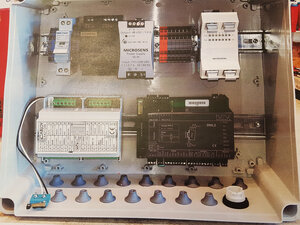
Safely separated
The micro switches required for building automation are installed in the industrial cabinets on DIN rails in plastic boxes. Some of the connected components, such as the WLAN access points, are supplied with Power over Ethernet. To avoid bottlenecks, Eniwa connects a maximum of two access points to a switch. More than 750 micro switches in total are in use today. Colour coding was considered from the outset in order to avoid confusion during the installation of the components. As the MICROSENS switches are 90 percent pre-configured and marked with different coloured stickers, it is immediately clear whether they are used in the office network or in the logically separated network of the building services.
Acid test passed
Taking a switch off the network for a short time in order for it to draw current when it powers up again is a headache for every IT manager. For this reason, Rolf Büeler anxiously awaited the first tests of the emergency power generators; after all, the office workstations with their more than 400 micro switches were not connected to the emergency power supply. The emergency power tests were carried out between four and eight times in succession, and the micro switches then continued to operate smoothly. "The switches really are very robust and reliable. Their performance in the network is amazing", says the IT manager. Rolf Büeler sees a great benefit in the clear network management software from MICROSENS, which monitors all switches. Eniwa's design network thus meets expectations in every respect, he is convinced: "We did everything right when planning and implementing the new network with MICROSENS micro switches".
About MICROSENS
Transmitting information via fiber optic connections offers numerous benefits. MICROSENS GmbH & Co. KG recognised this very early on. As one of the pioneers, the company has developed and produced high-performance communications and transmission systems in Germany since 1993. Individually matched to the demands of diverse usage areas and embedded in comprehensive concepts for individual sectors. But, above all, close to the customer. Technical challenges from customer projects are incorporated directly into product development. This way, IP-based automation solutions are created for modern buildings, cost-efficient network concepts for the office and workspace, robust and fail-safe solutions for industrial environments, optical transport systems future-oriented wide area networks and efficient coupling of sites and computer centres.






